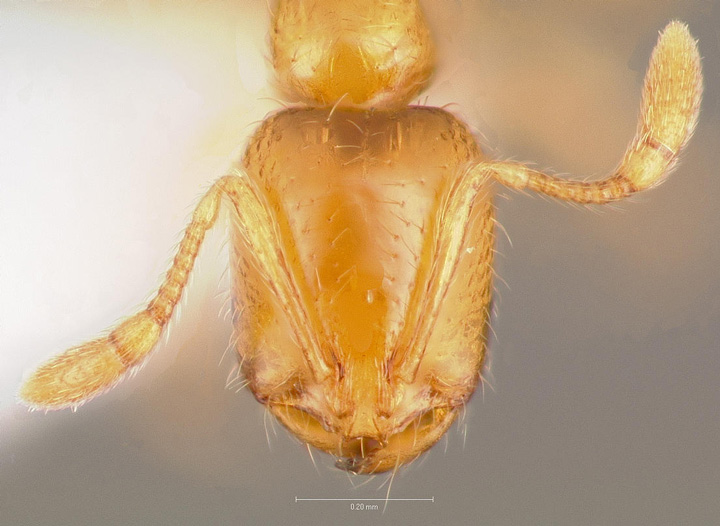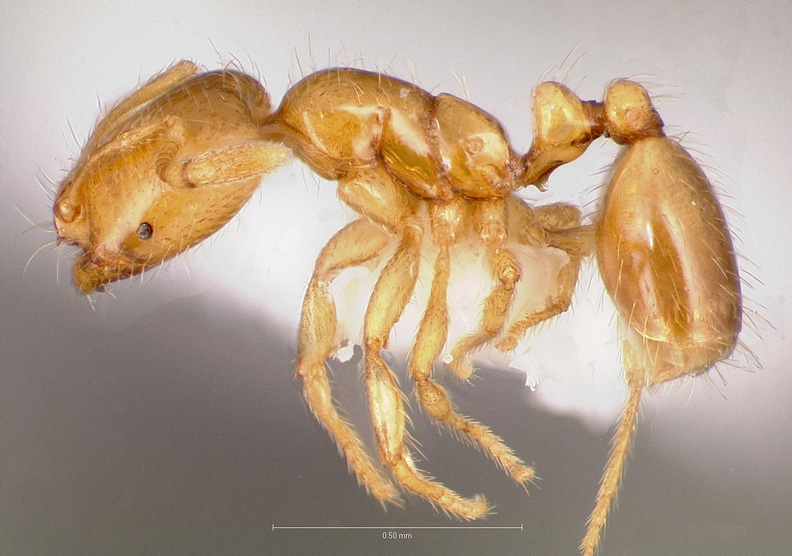Introduction
The genus Solenopsis includes both the "fire ants", known for their aggressive nature and potent sting, and the minute "thief ants", many of which are lestobiotic subterranaen or arboreal species that are rarely collected. Many species may be polygynous.
Identification
Generic level identification of Solenopsis is relatively straight forward, although sizes are greatly variable ranging from approximately 1.0 mm to over 4.0 mm. The genus can be basically characterized by the following: mandible with four teeth (usually), bicarinate clypeus with 0-5 teeth, median part of clypeus with a pair of longitudinal carinae medially or at lateral edges, 10-segmented antennae that terminates in a distinctive 2-segmented club, overall shiny appearance and general lack of or reduced sculpture (when present usually restricted to rugulae or striae on the head, alitrunk, petiole, and postpetiole), lack of propodeal spines or other protuberances on the alitrunk, well developed petiole and postpetiole, and a well developed sting. Workers are either polymorphic (especially in the fire ant group) or monomorphic (especially thief ants). The thief ant group shares these characteristics, but workers are minute (usually under 2.0 mm in total length), usually have minute eyes (usually with only 1-5 ommatidia (rarely more than 18, except for S. globularia in our region), minor funicular segments 2-3 typically wider than long (usually longer than wide in the fire ant group).
Hybridization is not uncommon among the larger fire ant group, which can make identification of some species difficult. Identification of thief ants is perhaps even more challenging due to their minute size, similar appearance of workers of one species to another, taxonomic problems, and lack of knowledge of all castes.
Biology and Economic Importance
Distribution
Literature Cited
Links
AntWeb Images] [Discover Life Images




